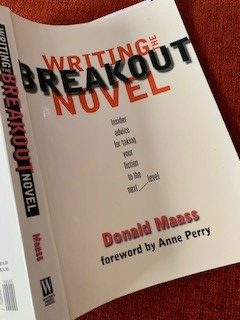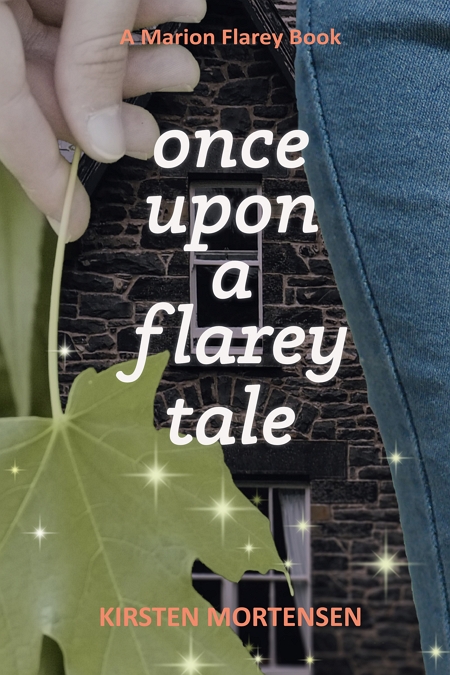Some two decades after its original publication, this how-to by an industry insider is still well worth a read.

I met Donald Maass, once. It was at a writer’s conference, a few years after he published Breakout — which gives you a clue about how long I’ve been at this crazy business. Amazon had not yet released the first Kindle. You had only two choices, if you wanted to become a working novelist. You could land an agent. Or you could send your manuscript to a publisher and hope it didn’t get lost in the slush pile.
I was at the conference in the hopes that I’d find an agent for Loose Dogs, and I managed to schedule a pitch meeting with Maass, which felt like a huge deal at the time.
He didn’t take me on. Therefore no, I’m not typing this on a solid gold keyboard. But I also attended a talk he gave that was based on Writing the Breakout Novel, and after I got home I ordered a copy.
And then recently, I picked it up again and realized (cliche alert!) that the book has stood the test of time.
Break-out success = word of mouth
My edition of Breakout was released in 2001; there are industry bits at the front of the book that are definitely dated. But there’s also plenty of material, even in the introductory chapters, that’s as true today as ever. For example, at the time two-thirds of all book sales were going to “name-brand authors” — but even unknown novelists could potentially achieve best-seller status, because, Maass writes,
The next biggest reason folks buy fiction is that it has been personally recommended to them by a friend, family member, or bookstore employee.
“Savvy publishers,” he adds, try to seed this process via ARCs, sending out sample chapters via email, websites, etc. Sounds familiar, doesn’t it? And uncanny. It’s exactly what self-published writers do, today, to prime the word-of-mouth pump.
Premise and Stakes
Once the book moves from “why write a break-out novel” to the how’s, Maass tackles what he calls premise, which he presents as more of a process than anything else — a process, by the way, that you should start before you begin writing your actual novel. Maass advises that you consider a number of elements that are key to the break-out novel, like originality and gut emotional appeal. It makes for a useful checklist that, in my opinion, can help us novelists become more clear-eyed about our work (and potentially help us avoid creating problems in our novels that will be a lot more challenging to fix 80,000 words in).
The next chapter is about stakes, another thing we need to understand because it’s so fundamental to conflict. Our characters need to care about what happens to them, and they care what happens to them because there is a price to be paid if they don’t get what they want.
Time and Place
Maass then does a chapter on what he calls “time and place.” And you might be tempted to think he’s just found a new way to say “setting” but it’s more nuanced than that. There’s a section on the psychology of place, for example–a concept that fascinates me and that I try to consider in all of my fiction; I think of it in terms of places being characters that impact my human (or humanoid!) characters.
The next chapter, Characters, covers another handful of concepts that you’ll find in other craft books. For example, “dark protagonists” should not be two-dimensional, but have sympathetic qualities, and all stories are ultimately character-driven.
But there are some unique nuggets here, too. For example, one tip (which I’ve internalized since I first read Breakout) is to look for places to combine characters’ roles. In When Libby Met the Fairies (which I’ve revised and am re-releasing next month, now on sale for pre-order! $4 off!) I made Libby’s boyfriend her employer as well. That let me simplify the book in terms of cast of characters (I didn’t have to create a separate character to be her boss and work him into the plot) while also enabling me to add interesting conflict to the dynamic of Libby and Paul’s relationship. She was dependent on him for income as well as intangibles like emotional support. More better stakes!
Plot
The last third or so of Breakout mostly digs into plot. There’s a chapter on plot basics, one titled Contemporary Plot Techniques, one on elements like viewpoints and subplots, and one titled Advanced Plot Techniques.
In a way, I suppose plot is the real heart of the book, because one thing that is probably true about all break-out novels is that they are plot-driven. They are stories that grip readers from the first page and then keep them interested until The End.
And to my reading, this is where Maass’ background as a long-time industry insider pays off. For example, there’s some excellent material about types of plots (fable, frame story, facade story, visitation plots) that I’ve not encountered elsewhere. Depending on what kind of novel you’re writing, there’s some rich veins in the sections on subplots and advanced plots as well.
Theme
Which brings us to the closing chapter, which is on Theme.
“Have something to say,” Maass writes. “Allow yourself to become deeply impassioned about something you believe to be true.”
Which is interesting advice, considering that Writing the Breakout Novel is a book about crafting commercial fiction, and when we think “commercial fiction” we think about money, don’t we? We think about sales and bestseller lists and the sound of corks popping out of expensive bottles of champagne.
But it’s possible that we writers (with a lot of work and a bit of luck) can have it both ways: we can be commercially successful while also exploring Big Ideas that potentially enrich readers’ lives or even change hearts and minds.
Do you agree?
And have you read Maass’ book? What did you think?
Interested in more posts like this? Click here to read my review of Story by Robert McKee.

